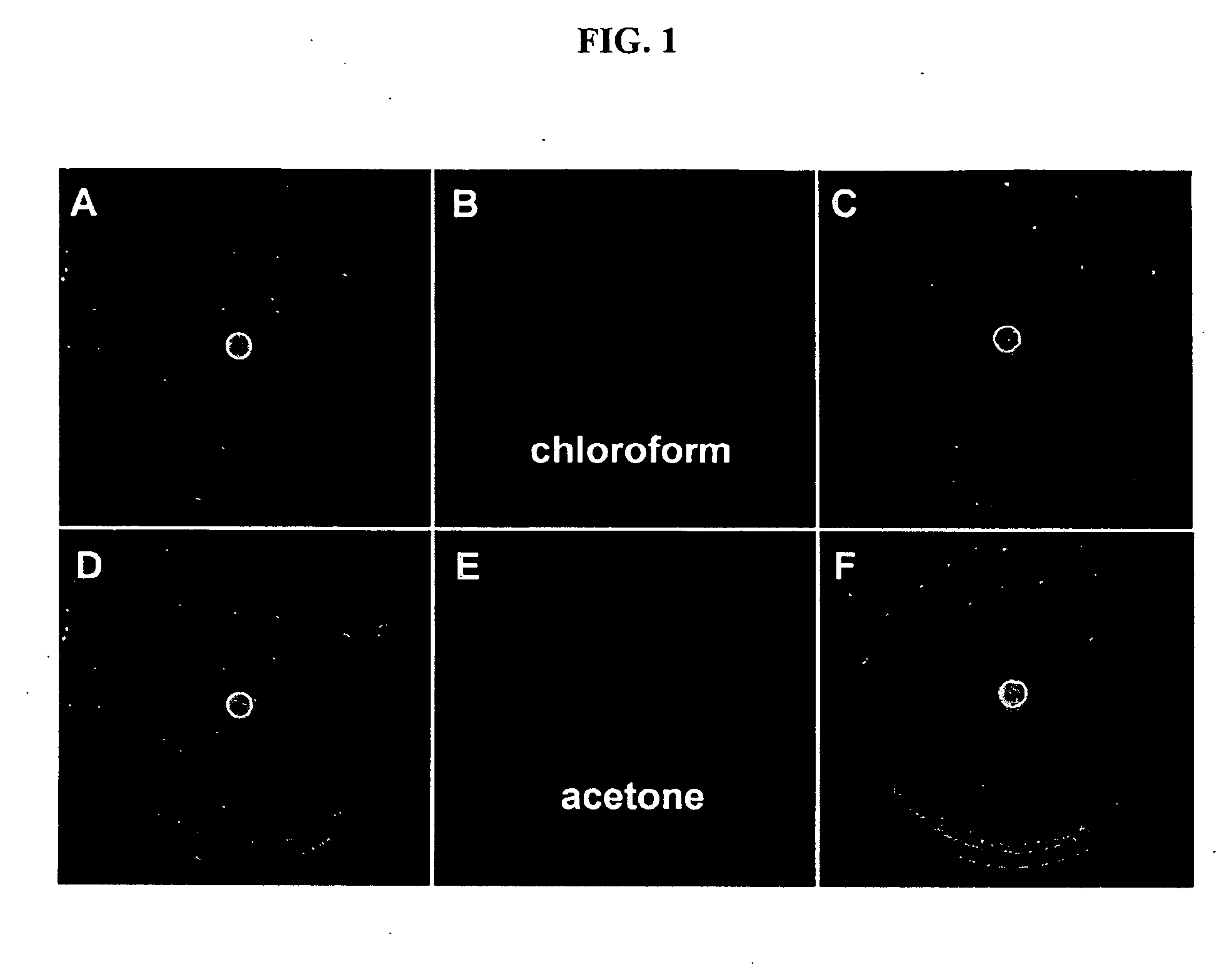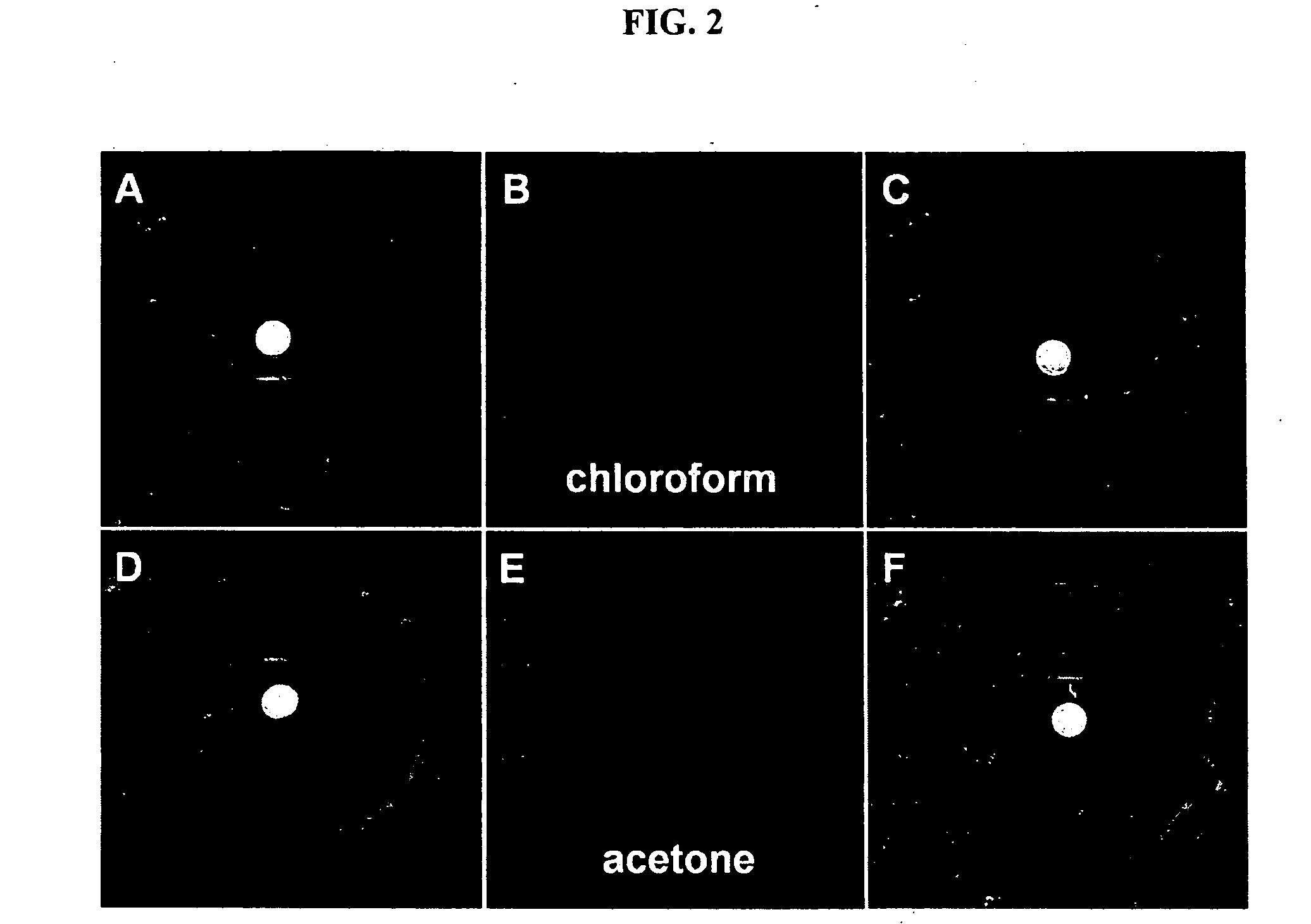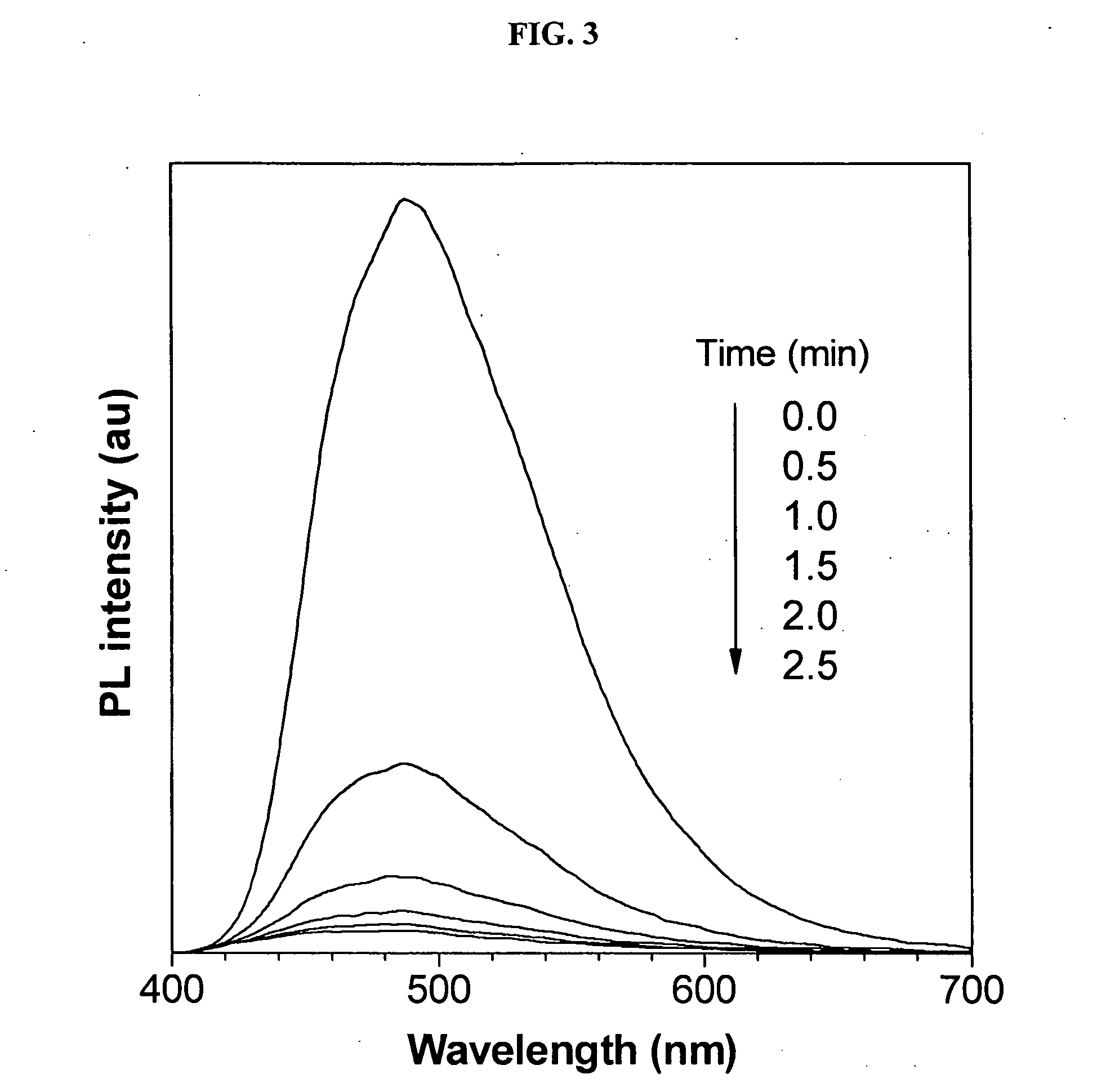Environment sensor and conjugated polyene for manufacturing environment sensors
a technology of environmental sensors and conjugated polyenes, applied in the field of environmental monitoring technologies, can solve problems such as difficulty in only seeing by the eye, and achieve the effects of enhancing intermolecular interaction, enhancing fluorescence, and enhancing solid state emission
- Summary
- Abstract
- Description
- Claims
- Application Information
AI Technical Summary
Benefits of technology
Problems solved by technology
Method used
Image
Examples
example 1
[0048]
[0049] Syntheses of 1,1-Di(thiophen-2-yl)-2,3,4,5-tetraphenylsilole (T2TPS): Thiophene (24 ml, 0.028 mol) and 80 ml freshly distilled THF were added to a completely dried 250 ml three-neck-flask and the mixture was cooled down to −78° C. with dry-ice / acetone bath. N-butyllithium (10 ml, 0.025 mol) was added to the reaction mixture. After 1.5 h, 1,1-dichloro-2,3,4,5-tetraphenylsilole (4.54 g, 0.01 mol), dissolved in 50 ml THF, was dropwise added. The temperature was kept at −78° C. for another 1 h before it was allowed to warm to room temperature. The reaction mixture was refluxed for 12 h and afterwards quenched by the addition of water. THF was removed under reduced pressure and diethyl ether was used to extract the water phase three times. The combined organic phases were dried over MgSO4 and purified by column chromatography (hexane / CHCl3 3:1). mp 212-213° C. 1H NMR (300 MHz, CDCl3): 7.68 (d, 2H), 7.47 (d, 2H), 7.20 (m, 2H), 7.06-6.80 (m, br, 20H). 13C NMR (75 MHz, CDCl3), ...
example 2
[0050]
[0051] Syntheses of Regioisomers of HPS-iPx,y: 2,4-Bis(2,6-diisopropyl)phenyl-1,1,3,5-tetraphenylsilole (HPS-iP2,4), 2,5-Bis(2,6-diisopropyl)-phenyl-1,1,3,4-tetraphenylsilole (HPS-iP2,5) and 3,4-Bis(2,6-diisopropyl)phenyl-1,1,2,5-tetraphenylsilole (HPS-iP3,4). Under dry nitrogen, 141.7 mg of freshly cut lithium shavings (20.42 mmol) was added to a solution of 1-(2-(2,6-diisopropylphenyl)ethynyl)benzene (5.35 g, 20.42 mmol) in 18 mL of THF at room temperature. The mixture was cooled to, and stirred at, 0° C. for 5 h and was then warmed to, and stirred at, room temperature for 16 h. The lithiation mixture was added dropwise to a solution of dichlorodiphenylsilane (1.5 mL, 7.08 mmol) in 120 mL of THF over 2 h. The resultant mixture was stirred at room temperature for 5 h and then refluxed for 18 h. The solvent was evaporated and the crude product was purified on an alumina column using hexane as the eluent. The silole regioisomers were isolated and purified by repeated chromatogr...
example 3
[0055]
[0056] The synthesis of 1-Phenyl-1-methyl-2,3,4,5-tetraphenylsilole (PMS) and 1-phenyl-1-ethyl-2,3,4,5-tetraphenylsilole (PES) were carried out according to Example 2 by using the corresponding methyl and ethyl substituted phenylsilyldichlorides.
Characterization Data:
[0057] PMS: 1H NMR (300 MHz, CDCl3): δ(TMS, ppm): 7.68 (m, 2H), 7.39 (m, 3H), 7.04 (m, 12H), 6.88 (m, 8H), 0.81 (s, 3H).
[0058] PES: mp 175-177° C. 1H NMR (300 MHz, CDCl3): 7.78 (d, 2H), 7.37 (m, 3H), 7.03-6.85 (m, br, 20H), 2.70 (s, 1H). 13C NMR (75 MHz, CDCl3), δ (TMS, ppm): 157.1, 138.5, 138.0, 136.5, 135.0, 130.5, 130.0, 129.7, 129.2, 128.4, 127.8, 127.6, 126.7, 126.0, 98.6, 82.5. UV (THF, 4.0×10−5 mol / L), λmax (nm): 372.
PUM
| Property | Measurement | Unit |
|---|---|---|
| temperature | aaaaa | aaaaa |
| temperature | aaaaa | aaaaa |
| transparent | aaaaa | aaaaa |
Abstract
Description
Claims
Application Information
 Login to View More
Login to View More - R&D
- Intellectual Property
- Life Sciences
- Materials
- Tech Scout
- Unparalleled Data Quality
- Higher Quality Content
- 60% Fewer Hallucinations
Browse by: Latest US Patents, China's latest patents, Technical Efficacy Thesaurus, Application Domain, Technology Topic, Popular Technical Reports.
© 2025 PatSnap. All rights reserved.Legal|Privacy policy|Modern Slavery Act Transparency Statement|Sitemap|About US| Contact US: help@patsnap.com



